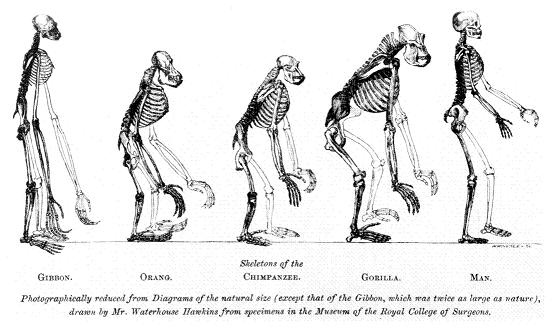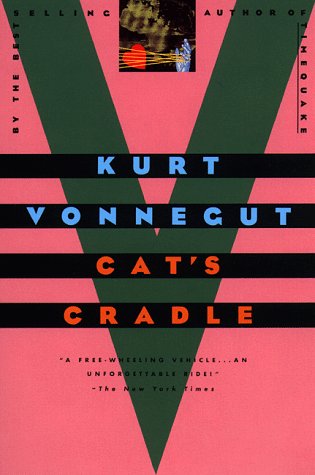A video on how many planes fill the sky over the course of a day. How I love well represented graphical data.
Thursday, April 8, 2010
We fill the sky
Saturday, March 27, 2010
E8 Theory of Everything conclusively disproved
 Elegant but unfortunately inaccurate, Garett Lisi's E8 Theory of Everything sought to map out all particle (known and yet to be discovered: see Higgs Boson among many others) interactions in physics in a Grand Unified Theory (GUT). The E8, for those of us who are not mathematicians, is a complex member of the Lie Group of mathematical structures of dimension 248. As an individual with a profound interest in physics, it's a relief to conclude that there is an exceptional amount of work to be done (who would have thought?).
Elegant but unfortunately inaccurate, Garett Lisi's E8 Theory of Everything sought to map out all particle (known and yet to be discovered: see Higgs Boson among many others) interactions in physics in a Grand Unified Theory (GUT). The E8, for those of us who are not mathematicians, is a complex member of the Lie Group of mathematical structures of dimension 248. As an individual with a profound interest in physics, it's a relief to conclude that there is an exceptional amount of work to be done (who would have thought?).
Thursday, March 11, 2010
Fairing Earthquakes: Haiti vs. Chile
Transonic Combustion Revitalizes Engine Output

Teaching an old dog new tricks seems to be the way we are approaching energy consumption; the Transonic Combustion engine is a new trick for a nearly dead dog. The new combustion style uses supercritical fluids that ignite when in contact with air, exactly timed to the piston's most efficient position. This way, no energy is wasted in combustion that is not used in the piston movement. Experts say that the expected out put on the engine will be somewhere around 98 mpg Highway, twice that of the best hybrids on the road today. Transonic says that the technology will be hitting the pavement somewhere between 2013-2014.
Tuesday, March 9, 2010
Google's New Public Data Explorer
As great as WolframAlpha is for data search, I have to say that as a designer, I am partial to visual representations and graphs. Google recently released its visual data representation labs that track the rates of everything from birth rate to retail sales rates on an interactive graph. Of course it's Google, and of course it's free.
Tuesday, March 2, 2010
Khaled Al-Saai, Arabic Graffiti

Porsche Gives the Hybrid-Class Some Biceps.
Saturday, February 27, 2010
Wednesday, February 24, 2010
Life beyond our universe
 This is the kind of thing that we just can't understand. The scope of our own universe is beyond what is imaginable. I think the extent to which we can know and study the existence of multiple universes is knowing that we can't know. In an article posted on Physorg, some MIT physicists explore the aforementioned possibility.
This is the kind of thing that we just can't understand. The scope of our own universe is beyond what is imaginable. I think the extent to which we can know and study the existence of multiple universes is knowing that we can't know. In an article posted on Physorg, some MIT physicists explore the aforementioned possibility.
Sunday, February 21, 2010
The food we eat and why it's killing us
Let the smashing begin: LHC back up and running
 (PhysOrg.com) -- For the Christmas holiday, the Large Hadron Collider at CERN was shut down for a break and for a little technical tinkering. But next week, the hope is that the LHC will start up again around the 25 of February.
(PhysOrg.com) -- For the Christmas holiday, the Large Hadron Collider at CERN was shut down for a break and for a little technical tinkering. But next week, the hope is that the LHC will start up again around the 25 of February.
Tuesday, February 16, 2010
Mosquito Lasers
If played in real time, these pests would be getting gunned down in less than a tenth of a second. Just like most anything, though, its much cooler in slow motion. For anyone squeamish about smacking a pest on their arm when its biting you, you might want to skip to the next post. The device has been developed by the Bill and Melinda Gates Foundation to help fight malaria. As PhysOrg notes,
Monday, February 15, 2010
Windows Mobile is not dead
Following iPhone OS (Apple), WebOS (Palm), and Android (Google), Microsoft has finally modernized its mobile platform (Windows Mobile). Windows Mobile is a new stripped and completely reworked mobile OS, taking some cue's from the wonderful Zune HD interface, but also adding many new features. The new UI (user interface) completely removes the classic (and sadly boring) windows feel, and replaces it with a streamlined, ultra useable, no gloss/shadow, simple recipe of shear usability. I love where this is going. What do you think?
Goodbye power cord; You will not be missed.
 A group of researchers at MIT have made yet another breakthrough in wireless power. By imbedding a large copper coil in a wall or ceiling and using electromagnetic resonance to transfer power between multiple devices, physicists André Kurs, Robert Moffatt, and Marin Soljačić have managed to generate fairly high efficiency by strategically coupling multiple devices as opposed to a single device. When the devices resonate at the same frequency, power is transferred with little interference by other objects resonating out of that frequency. Efficiency decreases with distance, but the system works from more than 2 meters away.
A group of researchers at MIT have made yet another breakthrough in wireless power. By imbedding a large copper coil in a wall or ceiling and using electromagnetic resonance to transfer power between multiple devices, physicists André Kurs, Robert Moffatt, and Marin Soljačić have managed to generate fairly high efficiency by strategically coupling multiple devices as opposed to a single device. When the devices resonate at the same frequency, power is transferred with little interference by other objects resonating out of that frequency. Efficiency decreases with distance, but the system works from more than 2 meters away.
Sunday, February 14, 2010
Fall Into a Black Hole at the Speed of Light (Simulation)
"Not too many of us have actually seen a black hole, but Thomas Müller, physics student, and Daniel Weiskopf, computer science professor, at the University of Stuttgart, have programmed a vision for us. With their simulation of a black hole in space, you can really imagine what it would be like to be in the pull of one." (PhysOrg)
Read the full article and catch the videos here.
Tuesday, February 9, 2010
Video: Massive Attack "Splitting the Atom"
New video from Massive Attack. Cool shooting and a cool song.
Massive Attack-Splitting the Atom-directed by Edouard Salier from edouard salier on Vimeo.
Shoot 1080p For Less than $1000
Google Smartphones To Translate Live
Monday, February 8, 2010
East Meets West: Will Americans Learn Chinese?
Yesterday, the New York Times tackled the aforementioned question in their Room For Debate blog. Essentially, the shrinking (or flatening) of the world is bringing the Far East closer and closer to the West. If you name one company that does all of its manufacturing in the United States, I'll name 5 that do all of their manufacturing abroad. Communication is increasing exponentially as an effect of symbiotic relationships between global companies in both the East and West. Many fear without the ability to communicate globally in a number of languages they will be left in the dust.
Check out the expert opinions after the break.
Sunday, February 7, 2010
How It's Made: Google Nexus One
Alright Google, you got me. I love this kind of thing.
The Future of Personal Computing: Closing the gap between smartphones and laptops
 Ross Rubin, director of industry analysis for consumer technology at market research and analysis firm the NPD Group gives an interesting view of the past several years of personal computing in his article Switched On column on engadget.
Ross Rubin, director of industry analysis for consumer technology at market research and analysis firm the NPD Group gives an interesting view of the past several years of personal computing in his article Switched On column on engadget.
Thursday, February 4, 2010
Facebook turns Six

Tuesday, February 2, 2010
Fascinating Improvements in TIssue Reconstruction
Real Time Webcams Enrich Google Earth
MPD Magicians
Sunday, January 31, 2010
Winching: Urban Wakeskating
I've been wakeboarding since I was young, but this video is much different from the wakeboarding I learned how to do. These guys put powerful winches near urban rivers and wakeskate to their content. It's a great idea, and really cool to watch (especially with the Justice playing).
Saturday, January 30, 2010
Morons of Milky Way: What E.T. thinks of us.
 "In 2008, NASA beamed the Beatles song "Across the Universe" into deep space, sending a message of peace to any extraterrestrial who happens to be in the region of Polaris, also called the North Star, in 2439." (PhysOrg)
"In 2008, NASA beamed the Beatles song "Across the Universe" into deep space, sending a message of peace to any extraterrestrial who happens to be in the region of Polaris, also called the North Star, in 2439." (PhysOrg)
Friday, January 29, 2010
The Gates' Donate $10 Billion to fight disease
Thursday, January 28, 2010
High Speed Rail Connectivity

Piezoelectricity moves forward (no pun intended)
Evolution vs. Creationism battle fought at collegiate level
"There is an insidious and growing problem," said Professor Jones, of University College London. "It's a step back from rationality. They (the creationists) don't have a problem with science, they have a problem with argument. And irrationality is a very infectious disease as we see from the United States." Read the full article here. Via The Guardian.
Levitating Magnets may be key to Fusion's Future

Wednesday, January 27, 2010
Apple Releases iPad: Impressive (kind of)
Tuesday, January 26, 2010
Campus green spaces enhance quality of life
 (Photo usage abides by GT Photography Usage Agreement)
(Photo usage abides by GT Photography Usage Agreement)
(Physorg September 29, 2008)
The Third & The Seventh, by Alex Roman
Watch this beautiful video (watch the whole thing, too, trust me), then read the secret after the jump.
The Third & The Seventh from Alex Roman on Vimeo.
New York Rethinks the Sidewalk Shed

Monday, January 25, 2010
Tilt Shift: Hong Kong
If you haven't heard of Tilt Shift, it seems to be the freshest way to time lapse videos. This style of filming selectively focuses to make the subjects in the film, even though they are shot in real life, seem as if they are miniature figures shot in stop motion.
Hong Kong Tilt Shift from Klas Ehnemark on Vimeo.
Strip Steve- Breakin'
Strip Steve - 'Breakin' from Boysnoize Records on Vimeo.
How much cooler can a flash video with a dancing lobster and a moonwalking triangle be?
The answer is none. None more cool.
Color Changing Windows: A Greener Future
"Imagine wrapping a giant pair of Wayfarers or Aviators around your house on a sunny day. Wouldn't that be cool? NREL researchers are trying to do the high-tech equivalent of putting sunglasses on buildings with a new generation of insulated "dynamic windows" that change color to modulate interior temperatures and lighting." Read the whole article here.
Will Apple beat Amazon at their own game?: iPad vs. Kindle 3

(GIZMODO)
What is the Apple iPad (or maybe its iSlate?) you ask? Well, its an unannounced unleaked apple tablet that rumor speculates will be released in 2 days time, at Apple’s Media Event. With pricing speculated as high as $1000 (although in my worthless opinion it will be a subsidized $499 with data plan from VZW or ATT), it might seem insane to argue it will overtake amazon’s best-selling device this holiday season.
Thursday, January 21, 2010
Some mashups just make no sense. Some don't need to.
Wednesday, January 20, 2010
Burj Khalifa
 A few weeks ago, the SOM designed Burj Khalifa (formerly called the Burj Dubai) opened. A few stats and thoughts about the tallest building in the world below.
A few weeks ago, the SOM designed Burj Khalifa (formerly called the Burj Dubai) opened. A few stats and thoughts about the tallest building in the world below. Personal Flight: Check
An interesting adaptation...
So what is a genre again?

Let me start by saying that in no way am I complaining: anywhere that has Flying Lotus, Portugal. The Man, De La Soul, Old Crow, Major Lazer, The Avett Brothers, and Thom Yorke, all in three days is the place I want to be. If you can figure a way to get there for the weekend, it is definitely worth the money.
Tuesday, January 19, 2010
Had to happen sometime
Monday, January 18, 2010
Book Talk: Cat's Cradle, by Kurt Vonnegut

What am I doing?
“You can't connect the dots looking forward; you can only connect them looking backwards. So you have to trust that the dots will somehow connect in your future. You have to trust in something — your gut, destiny, life, karma, whatever. This approach has never let me down, and it has made all the difference in my life.” - Steve Jobs
Putting Thoughts in Jars

A while ago, a friend made an offhand comment about thoughts. He said, "you can't put a thought in a jar." I think about that from time to time, the fact that all that I am writing here does not exist except for the movements my fingers are making on the keyboard. If you have a little time, read through this article on consciousness. Human consciousness is a fascinating thing to talk about, in that we, as humans, have metacognition: the ability to think about thinking. A dog can't sit in his house and think about the reason why he wants his dinner: he just does.
Read the article here.
New Blood
So here goes. Masse and I wanted to start a blog that displayed what our current interests and muses are. We hope you enjoy the posts, but more importantly, we want to aid to the greater enlightenment of others. Our posts may seem random and unrelated, but so are our interests. Thanks for viewing, and don't forget to comment.














